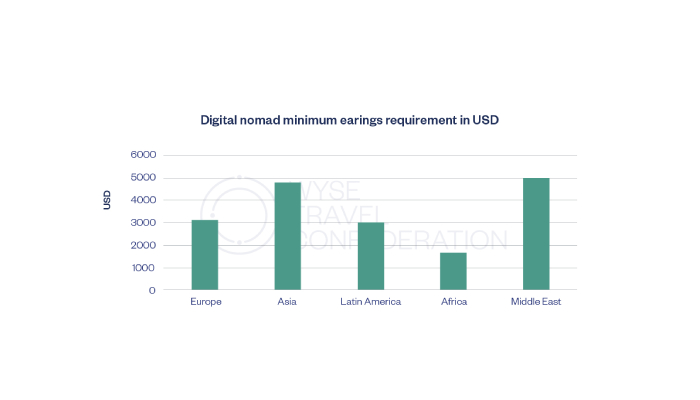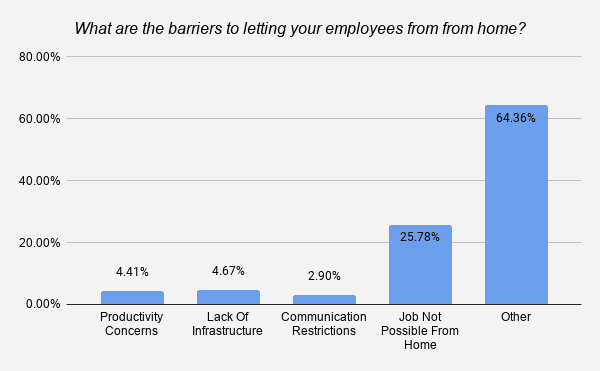Covid-19 disrupted the lifestyle of digital nomads, forcing many to reassess their travel plans and working arrangements. Remote work became both a necessity and an opportunity.
Digital nomads faced unprecedented challenges during the Covid-19 pandemic. Travel restrictions and lockdowns made it difficult to move between countries. Many digital nomads had to adapt by finding stable locations to weather the storm. This period also saw a surge in remote work opportunities, allowing more people to consider the digital nomad lifestyle.
The pandemic highlighted the importance of reliable internet and flexible work arrangements. Overall, Covid-19 reshaped the digital nomad community, emphasizing adaptability and resilience. As the world adjusts to new norms, the digital nomad lifestyle continues to evolve and thrive.
Remote Work Revolution
The Covid-19 pandemic has reshaped how we work. Many companies shifted to remote work. This change has greatly impacted digital nomads. The remote work revolution has brought new opportunities and challenges.
Increased Flexibility
Remote work offers increased flexibility. Digital nomads can work from anywhere. They can choose their own schedules. This flexibility allows for a better work-life balance. Many people now prefer remote work over office jobs.
Before the pandemic, few companies allowed remote work. Now, many businesses support this model. This change has opened up more job opportunities for digital nomads. They can now work for companies worldwide.
Technological Advancements
Technological advancements have made remote work easier. Tools like Zoom, Slack, and Trello help teams stay connected. These tools improve communication and collaboration.
| Tool | Purpose |
|---|---|
| Zoom | Video conferencing |
| Slack | Instant messaging |
| Trello | Project management |
With these tools, digital nomads can work efficiently. They can join meetings, share files, and track projects. This has made remote work more productive.
- Better communication
- Efficient project management
- Easy file sharing
The remote work revolution has changed the way we live and work. Digital nomads are now more connected and flexible than ever before.
Challenges Faced By Digital Nomads
The Covid-19 pandemic has brought a unique set of challenges to digital nomads. These challenges have made the lifestyle they cherish more difficult. Let’s explore some of the key hurdles they face.
Travel Restrictions
Travel restrictions have been a major issue for digital nomads. Many countries closed their borders to control the virus spread. This made it hard for nomads to move freely from one place to another.
Visa regulations also changed frequently, causing uncertainty. Many nomads found themselves stuck in countries with expiring visas. Flights were often canceled or rescheduled, adding to the chaos.
Nomads had to adapt quickly to these changes. They needed to find new places to stay and work from. This was not always easy, especially in remote areas with limited resources.
Isolation And Mental Health
Isolation has become a significant issue for digital nomads during the pandemic. Social distancing measures limited interactions with locals and other travelers.
This led to feelings of loneliness and isolation. Many nomads rely on coworking spaces and cafes to socialize and work. These places were often closed or had restrictions in place.
Mental health suffered as a result. Digital nomads faced increased stress and anxiety. The uncertainty of the situation added to their mental burden.
Maintaining a routine became crucial. Many turned to online communities and virtual meetups for support. These provided a sense of connection in a time of isolation.
Opportunities For Digital Nomads
The Covid-19 pandemic has reshaped work. Digital nomads now see new opportunities. These changes offer fresh experiences and growth. Let’s explore these opportunities.
New Work Environments
With offices closed, workers moved to home setups. Digital nomads can now work from anywhere. This means more flexibility and freedom.
Many countries offer special visas for remote workers. They welcome digital nomads to live and work there. This trend has opened up new destinations.
Here are some popular choices:
- Barbados
- Portugal
- Estonia
These places provide great work-life balance. They offer beautiful views and good internet.
Growth In Remote Job Markets
The pandemic has increased remote job opportunities. Companies have adapted to remote work. They now hire talent from around the world.
This change benefits digital nomads. They can find more remote jobs than before. Many industries now support remote work:
- Technology
- Marketing
- Customer Service
- Writing and Editing
Below is a table showing some popular remote job platforms:
| Platform | Focus Area |
|---|---|
| Upwork | Freelance Services |
| Remote.co | Remote Job Listings |
| We Work Remotely | Remote Job Opportunities |
These platforms make finding remote work easier. They connect digital nomads with employers.

Credit: digitalnomads.world
Adaptation Strategies
The Covid-19 pandemic has greatly impacted digital nomads. They had to quickly adapt to survive. This section explores key adaptation strategies for digital nomads. From building resilience to finding community support, these strategies ensure survival and growth.
Building Resilience
Digital nomads developed various ways to stay strong. They embraced new routines and habits. Many started to focus on mental health and well-being. Regular exercise and meditation became essential. This helped them stay calm and focused.
They also improved their tech skills. Learning new software tools became a priority. This made them more versatile in the job market. They attended online courses and webinars. This enhanced their professional skills and knowledge.
Community Support
Community support played a crucial role during the pandemic. Digital nomads formed online groups and forums. These platforms provided a sense of belonging. They shared resources and tips to navigate the crisis.
Many joined virtual co-working spaces. These spaces offered a productive environment. They also provided networking opportunities. This helped digital nomads find new job prospects. They felt less isolated and more connected.
Local communities also extended help. Many offered temporary housing and essential supplies. This support was vital for stranded digital nomads.
| Strategy | Description |
|---|---|
| Building Resilience | Focus on mental health, improve tech skills, stay versatile. |
| Community Support | Join online groups, virtual co-working spaces, local help. |
These adaptation strategies helped digital nomads thrive during the pandemic. By building resilience and relying on community support, they navigated challenges effectively.
Future Of Digital Nomadism
The future of digital nomadism has been deeply influenced by the Covid-19 pandemic. As remote work became the norm, many realized the potential of working from anywhere. This shift has led to new trends and opportunities in the digital nomad community. But challenges also exist. Let’s explore these aspects in detail.
Long-term Trends
The pandemic has accelerated the adoption of remote work. More companies now offer flexible work policies. This change has empowered professionals to embrace the digital nomad lifestyle. Here are some key long-term trends:
- Increased demand for co-working spaces: Digital nomads seek collaborative environments.
- Rise of digital nomad visas: Countries like Estonia and Barbados offer special visas.
- Growth in online communities: Platforms for networking and support are thriving.
These trends suggest a promising future for digital nomads. They can now find more resources and support than ever before.
Potential Setbacks
Despite the positive trends, the digital nomad lifestyle faces some challenges. Here are potential setbacks:
- Travel restrictions: Some countries have strict entry requirements.
- Health concerns: Safety protocols can vary widely between destinations.
- Internet connectivity: Reliable internet is crucial for remote work.
These setbacks can affect the feasibility of a nomadic lifestyle. Digital nomads must stay informed and adaptable to navigate these challenges.

Credit: www.wysetc.org
Successful Digital Nomad Stories
The COVID-19 pandemic changed the world. It especially affected digital nomads. Many faced new challenges. Yet, some turned these challenges into success stories. Let’s explore some of these inspiring tales.
Case Studies
| Name | Location | Success Story |
|---|---|---|
| Emma | Bali | Emma shifted her business online. She created a successful e-course. |
| John | Portugal | John started a blog. He now earns through affiliate marketing. |
| Lisa | Thailand | Lisa launched a virtual assistant service. She helps businesses remotely. |
Lessons Learned
- Flexibility is key. Adapt to changes quickly.
- Online presence is crucial. Build a strong digital footprint.
- Networking helps. Connect with other digital nomads.
These stories show resilience. Digital nomads can thrive despite challenges.
Tips For Aspiring Digital Nomads
The Covid-19 pandemic has reshaped the way we work. Many people now embrace the digital nomad lifestyle. If you dream of working from anywhere, this guide will help. Here are some key tips for aspiring digital nomads.
Essential Skills
Communication is crucial for digital nomads. Clear messages help teams stay connected. Time management ensures tasks are completed on time. You must also have tech-savvy skills. Understanding basic software and tools is vital. Adaptability is another essential skill. Changes in environment and work conditions are common. Lastly, self-discipline is important. Working remotely requires a lot of focus.
Resource Recommendations
Here are some helpful resources for digital nomads:
- Remote Job Boards: Websites like Remote.co and We Work Remotely offer remote job listings.
- Communication Tools: Use Slack or Zoom for team communication.
- Project Management: Tools like Trello and Asana help manage tasks efficiently.
- Learning Platforms: Websites like Coursera and Udemy offer courses to improve your skills.
- Travel Planning: Use Nomad List to find the best cities for digital nomads.
Sample Daily Schedule
| Time | Activity |
|---|---|
| 8:00 AM – 9:00 AM | Morning Routine and Breakfast |
| 9:00 AM – 12:00 PM | Focused Work |
| 12:00 PM – 1:00 PM | Lunch Break |
| 1:00 PM – 4:00 PM | Team Meetings and Collaboration |
| 4:00 PM – 6:00 PM | Wrap-Up and Planning for Next Day |
| 6:00 PM onwards | Free Time and Leisure Activities |

Credit: www.wysetc.org
Frequently Asked Questions
How Did Covid-19 Impact Digital Nomads?
Covid-19 forced many digital nomads to adapt quickly. Travel restrictions limited movement, and many returned home. Workspaces became virtual, increasing reliance on digital tools.
Are Digital Nomads More Prevalent Post-covid?
Yes, the pandemic accelerated remote work trends. More companies now offer remote options, making the digital nomad lifestyle more accessible.
What Challenges Did Digital Nomads Face During Covid-19?
Digital nomads faced travel restrictions, visa issues, and isolation. Finding stable internet and workspaces also became challenging due to lockdowns.
Did Covid-19 Change Digital Nomad Work Environments?
Yes, many shifted to home offices or co-living spaces. Virtual collaboration tools became essential for maintaining productivity and communication.
Conclusion
The Covid-19 pandemic has significantly impacted digital nomads. Remote work became essential, reshaping lifestyles and travel plans. Many discovered new opportunities and challenges. Embracing flexibility and adaptability remains crucial. The future holds potential for more innovative work solutions. Digital nomads continue to evolve, thriving in this new landscape.

